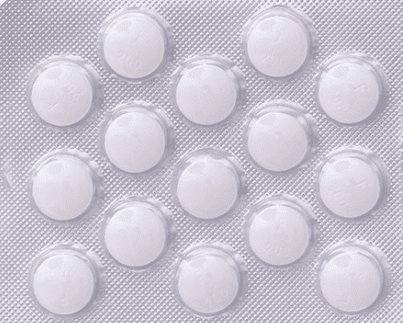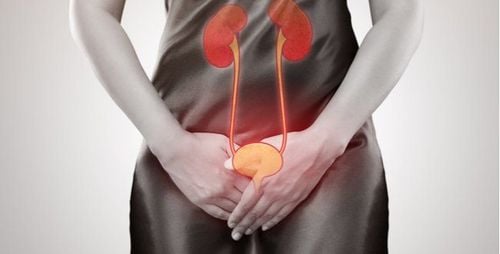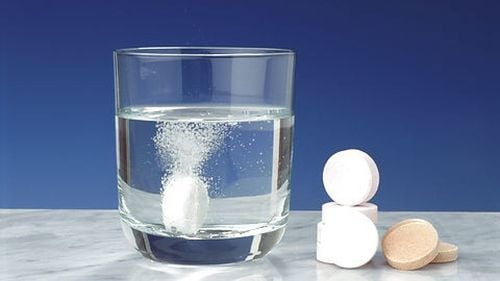This is an automatically translated article.
Prolapse of the ureter is a birth defect that can occur in all subjects but is most common in children. This disease causes urinary tract disorders, if not detected and treated early, it will lead to complications affecting kidney function.
1. What is ureteral prolapse?
Ureteral prolapse is a condition in which the lining of the ureter proximal to the bladder is dilated into a sac-shaped shape and protrudes into the lumen of the bladder. Prolapse of the ureter is common when the ureter pours into the bladder in the wrong place, narrowing the place to pour into the bladder.This disease can affect anyone from children to adults, but it has been found that it is more common in children. In children with prolapse of the ureter due to birth defects, it is often accompanied by double ureteral malformations.
2. Causes of prolapse of the ureter
For young children: The cause is often due to birth defects, protrusion of the ureter is mainly seen in young children and is more common in girls than in boys. Cases in young children are often accompanied by a double ureteral kidney, which can be seen on both left and right sides. For adults: Prolapse of the ureter is usually caused by the influence of lifestyle habits.

Sa niệu quản thường gặp nhiều ở trẻ nữ
3. Symptoms of prolapse of the ureter
Prolapse of the ureter often has few clinical symptoms, most of the disease manifestations are manifestations of complications.
3.1 In children Clinical symptoms may be encountered such as:
Urinary tract infections: Children have high fever, cloudy urine, hematuria, and little urine. Children with recurrent urinary tract infections lead to growth retardation. Urinary disorders: Difficulty urinating, children often cry when urinating, after urinating, they stop, have to strain, urinate often. 3.2 In adults, symptoms may occur such as:
Ureteral stones: Dull low back pain, sometimes increasing into attacks such as renal colic, painful urination, urinary frequency, hematuria, urination. stones... Urinary tract infections: Manifestations of acute or subacute cystitis, recurrent cystitis, patients with urinary disorders such as difficulty in urination are very common, which can cause urinary retention, dysuria, urinary frequency, hematuria, cloudy urine. Untreated cystitis causes retrograde pyelonephritis, patients develop high fever, chills, cloudy urine, blood in urine, pus in urine.

Sa lồi niệu quản lâu ngày có thể gây ra tiểu ra máu, ra mủ
4. Complications of ureteral prolapse
Prolapse of the ureter if not detected early, the long-term progression of the disease can cause the following complications:
This condition causes water retention in the kidneys and ureters, gradually forming kidney stones, ureteral stones. If water retention lasts for a long time, it leads to impaired kidney function, loss of function. The prolapsed ureteral sac prolapses to the outside. Urinary tract infection, retrograde pyelonephritis is the most common and dangerous complication that can progress to decrease renal function.
5. How is ureteral prolapse diagnosed?
Congenital ureteral prolapse can be diagnosed before birth by fetal ultrasound, screening for malformations.
If not detected during prenatal screening, the diagnosis is based on clinical signs combined with subclinical signs such as:
General abdominal ultrasound: Is a simple, leading technique in diagnosis of ureteral prolapse. Ultrasound can detect the position, size, and other abnormalities of the prolapsed ureteral sac, such as double kidney ureter, hydronephrosis causing pyelonephritis, urinary tract stones... UIV (intravenous urogram) ) : is a method to help diagnose and assess the status of the disease, evaluate kidney function. In addition, other diagnostic methods are used to assess the extent and serve the treatment.

Chẩn đoán sa lồi niệu quản bằng hình ảnh
6. Method of treatment for prolapse of the ureter
6.1 Medical treatment To treat complications causing urinary tract infections, must be treated with antibiotics to treat infections before surgery.
6.2 Surgical treatment As the sole treatment of the disease, surgery is needed as soon as indicated to prevent complications. The type of surgery depends on the specific condition of the disease.
6.2.1 Laparoscopic urethral puncture Usually indicated for ureteral prolapse in the right place in the bladder and thin wall, ureteral prolapse is punctured or torn and deflated to help urine flow easily from kidneys to the bladder.
6.2.2 Laparotomy to remove the prolapsed sac and reattach the ureter to the bladder. With this method of treatment, the disease is highly effective
6.2.3 Surgery to remove the upper pole of the kidney In some cases of double ureteral renal malformation, when the prolapsed ureteral sac that makes the corresponding upper pole is no longer functional, it is necessary to surgically remove this part.
6.2.4 Nephrectomy Usually in the case of a single ureteral nephron, if the prolapse of the ureter causes long-term complications that lead to loss of kidney function, surgical removal of the non-functional kidney is necessary.
6.2.5 Treatment of complications caused by protrusion of the ureter such as urinary stones If the stones are large, they can be treated with extracorporeal lithotripsy, surgery... Prolapse of the ureter is a possible pathology. cause many complications that greatly affect kidney function, but the diagnosis is not too difficult, so when there are signs such as: recurrent urinary tract infections, urinary disorders.. should go to a medical facility for examination. correctly diagnosed. Early treatment limits the risk of kidney damage.
Any questions that need to be answered by a specialist doctor as well as customers wishing to be examined and treated at Vinmec International General Hospital, you can contact Vinmec Health System nationwide or register online HERE.













